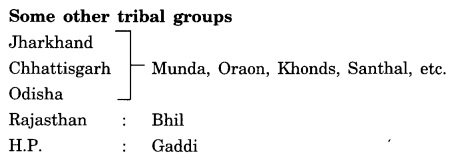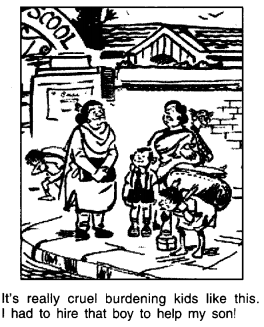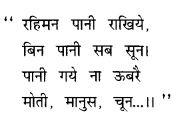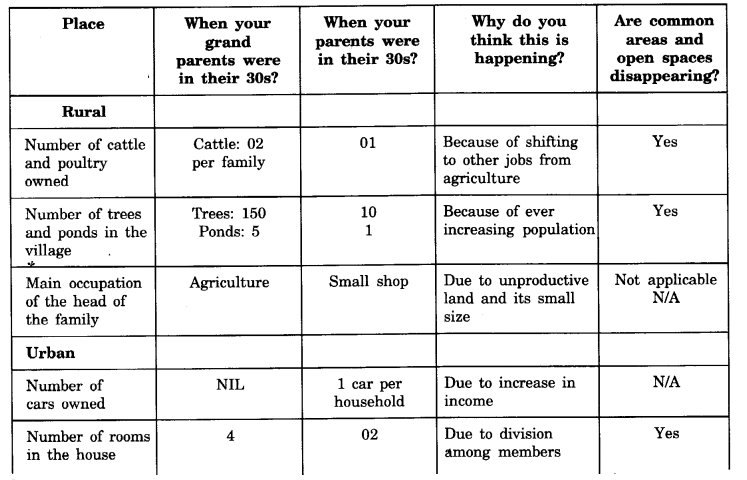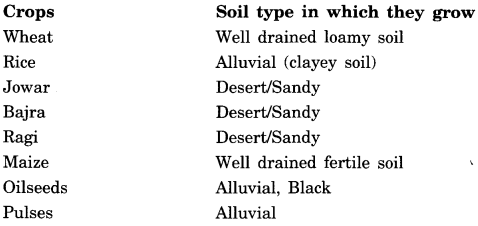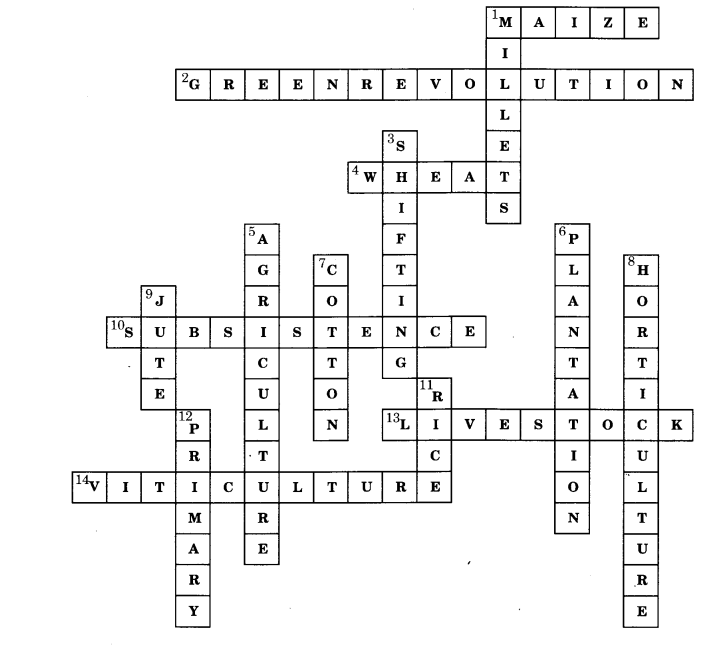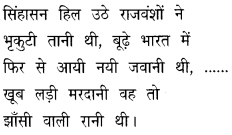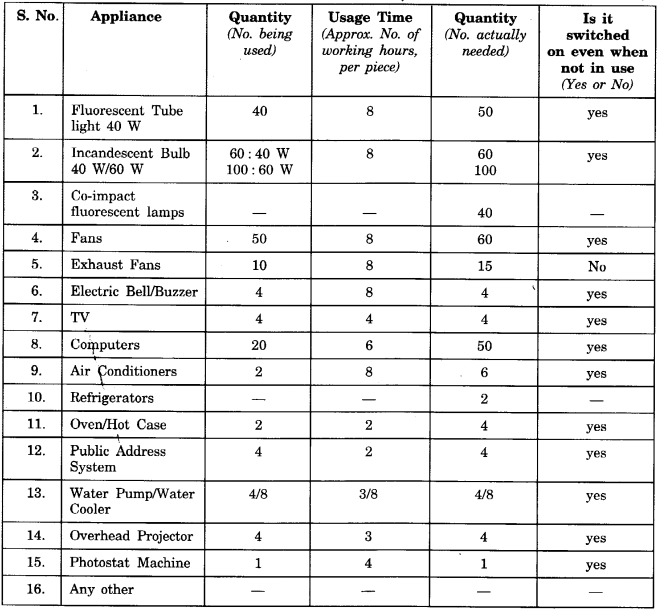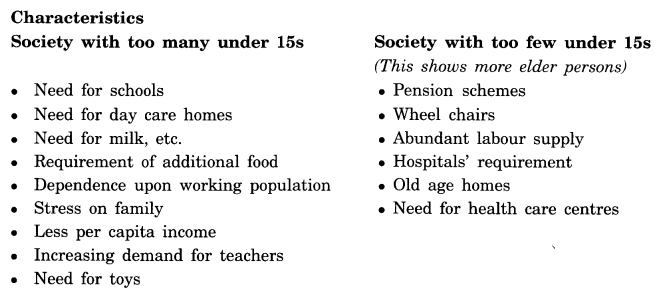NCERT Solutions for Class 8 English Honeydew Chapter 4 Bepin Choudhury’s Lapse of Memory are part of NCERT Solutions for Class 8 English. Here we have given NCERT Solutions for Class 8 English Honeydew Chapter 4 Bepin Choudhury’s Lapse of Memory.
| Board | CBSE |
| Textbook | NCERT |
| Class | Class 8 |
| Subject | English |
| Chapter | Chapter 4 |
| Chapter Name | Bepin Choudhury’s Lapse of Memory |
| Category | NCERT Solutions |
NCERT Solutions for Class 8 English Honeydew Chapter 4 Bepin Choudhury’s Lapse of Memory
IMPORTANT PASSAGES FOR COMPREHENSION
Read the following extracts and answer the questions that follow choosing the correct options among the given ones :
I. “I don’t suppose you recognise me.”
“Have we met before ?” asked Bepin Babu.
The man looked greatly surprised. “We met every day for a whole week. I arranged for a car to take you to the Hudroo falls. (Page 60)
Multiple Choice Questions
1. “I” in the first sentence refers to
(a) Bepin Babu
(b) an actor
(c) Dinesh Mukerji
(d) Chuni Babu.
2. Hudroo falls are in
(a) Kolkata
(b) Mumbai
(c) Ranchi
(d) Delhi.
3. The man looked surprised because
(a) he was acting to convince Bepin Babu
(b) he was really surprised
(c) he felt he was being cheated
(d) he thought Bepin Babu was lying.
Answers
1. (b) an actor
2. (c) Ranchi
3. (a) he was acting to convince Bepin Babu
II. “What are you saying, Mr Choudhury ? You had a fall in Hudroo and cut your right knee. I brought you iodine. I had fixed up a car for you to go to Netarhat the next day, but you couldn’t because of the pain in the knee. Can’t you recall anything ? Someone else you know was also in Ranchi at that time. Mr Dinesh Mukerji. (Page 61)
Questions
1. Who is the speaker of these lines ?
2. Who was Dinesh Mukerji ?
3. Why was he not able to recall anything ?
4. Is the speaker telling the truth ?
Answers
1. Parmal Ghose is the speaker of these lines.
2. Dinesh Mukerji was known to Bepin Choudhury. He had become an accomplice of Chuni Babu.
3. He was not able to recall anything because he had never been to Ranchi.
4. No, the speaker is telling lies.
III. “Very strange. One evening I had tea with you in a veranda of your bungalow. You spoke about your family. You said you had no children, and that you had lost your wife ten years ago.” (Page 62)
Multiple Choice Questions
1. In fact it was not strange because
(a) the speaker was lying
(b) Bepin Babu had lost memory
(c) the speaker had some
(d) Bepin Babu was lying. misunderstanding
2. The facts about the family given here are
(a) right
(b) wrong
(c) some right and some wrong
(d) none of the above.
3. The man who had lost his wife was
(a) the speaker
(b) Bepin Babu
(c) Chuni Babu
(d) Dinesh Mukeiji.
Answers
1. (a) the speaker was lying
2. (a) right
3. (b) Bepin Babu
IV. But where was the need for proof? He himself was fully aware that he hadn’t been to Ranchi—and that was that.The river breeze was bracing, and yet a slight discomfort lingered in Bepin Babu’s mind. (Page 63)
Questions
1. Why was there no need for proof ?
2. Was Bepin Babu sure of what he said ?
3. What caused the discomfort in his mind ?
4. Write the word which is the opposite of ‘discomfort’.
Answers
1. There was no need for any proof because Bepin Babu had never been to Ranchi.
2. No, he wasn’t quite sure.
3. Parmal Ghose had caused the discomfort in his mind.
4. comfort.
V. Just before lunch Bepin Babu decided to ring up Dinesh Mukerji. It was better to settle the question over the phone ; at least the embarrassment on his face wouldn’t show. (Page 64)
Multiple Choice Questions
1. Dinesh Mukerji was
(a) Bepin Babu’s friend
(b) an accomplice of Chuni Babu
(c) a stranger to Bepin Babu
(d) a doctor.
2. Bepin Babu decided to ring up Dinesh Mukerji because
(a) he trusted Dinesh Mukerji
(b) Dinesh Mukerji was truthful
(c) the stranger had said that Dinesh
(d) none of the above, was with him
3. The word ‘embarrassment’ means the same as
(a) nervousness
(b) surprise
(c) anger
(d) peace.
Answers
1. (b) an accomplice of Chuni Babu
2. (c) the stranger had said that Dinesh was with him
3. (a) nervousness
VI. Bepin Babu slammed the receiver down and gripped his head with his hands. He felt his head swimming. A chill seemed to spread over his body. There were sandwiches in his tiffin box, but he didn’t eat them. He had lost his appetite! (Page 65)
Questions
1. What was the state of Bepin’s mind ?
2. What made him lose his appetite ?
3. Who was responsible for bringing Bepin Babu to this state ?
4. Find a word in the passage which means the same as ‘cold’.
Answers
1. Bepin was feeling headache.
2. A sense of depression made him lose his appetite.
3. Chuni Babu was responsible for bringing Bepin Babu to this state.
4. chill.
VII. “Listen, Chuni—I want to ask you something. You have a good memory, and you’ve been seeing me off and on for a long time. Just throw your mind back and tell me—did I go to Ranchi in’ 58 ?” (Page 66)
Multiple Choice Questions
1. Chuni was at the moment (towards Bepin Babu)
(a) kind
(b) helpful
(c) angry
(d) revengeful.
2. Chuni had been seeing the speaker for a long time because he was
(a) an old acquaintance
(b) an intimate friend
(c) in need of his help
(d) his old servant.
3. By this time the speaker had been to Ranchi
(a) once
(b) never
(c) twice
(d) thrice.
Answers
1. (d) revengeful
2. (c) in need of his help
3. (b) never
VIII. “I’ve been working too hard,” he said at last. That must be the reason. Must see about consulting a specialist.” (Page 67)
Questions
1. Who is the speaker of the above lines ?
2. Why does the speaker want to consult a doctor ?
3. Has he hit upon the right reason ?
4. Whom is he talking to ?
Answers
1. Bepin Babu is the speaker of the above lines.
2. The speaker thinks that there is something wrong with his memory. So he wants to consult a doctor.
3. No, he does not know the right reason.
4. He is talking to Chunilal.
IX. Bepin Babu felt somewhat better the next morning.
After breakfast, he rang up his office, gave some instructions and then procured a first class ticket for Ranchi for the same evening.
Multiple Choice Questions
1. Bepin Babu was feeling better after meeting
(a) Chuni Babu
(b) The doctor
(c) Sitaram
(d) Dinesh Mukeiji.
2. He was going to Ranchi
(a) as a tourist
(b) to meet a friend
(c) on his doctor’s advice
(d) on business.
3. The trip to Ranchi will
(a) worsen his condition
(b) help him recover
(c) soothe him
(d) not affect him at all.
Answers
1. (b) The doctor
2. (c) on his doctor’s advice
3. (a) worsen his condition
X. “The reason why I sent for you,” said Bepin Babu, “is that I have a pain in the hip from a fall I had in Ranchi. If you could prescribe a pain killer …” (Page 70)
Questions
1. Why had Bepin Babu sent for the doctor ?
2. Had Bepin Babu a fall in Ranchi ?
3. Name the author of the passage.
Answers
1. Bepin Babu had sent for the doctor because he thought he was losing his senses.
2. No, Bepin Babu had had no fall.
3. The name of the author is Satyajit Ray.
TEXTUAL EXERCISES
COMPREHENSION CHECK (Page 62)
1. Why did the man stare at Bepin Babu in disbelief ?
2. Where did Bepin Babu say he went in October ’58 ?
3. Mention any three (or more) things that Parimal Ghosh knew about Bepin Babu.
Answers
1. The man was an actor. His sole purpose was to convince Bepin Babu that he had lost his memory. To do so he told him that he had been to Ranchi for a week. When Bepin Babu said he hadn’t, he stared at him in disbelief. He succeeded in creating at least a doubt in the mind of Bepin Babu.
2. Bepin Babu said that in October ’58, he had gone to Kanpur.
3. Parimal Ghosh knew that Mrs Choudhury was dead. He knew that his only brother had died insane. He also knew that Bepin Babu carried a bag of books when he went for sight-seeing. He knew that Bepin Choudhury had no children.
COMPREHENSION CHECK (Page 65)
1. Why did Bepin Babu worry about what Parimal Ghosh had said ?
2. How did he try to decide who was right—his memory, or Parimal Ghosh ?
3. Why did Bepin Babu first hesitate to visit Mr Mukerji ? Why did he finally decide to phone him ?
4. What did Mr Mukerji say ? Did it comfort Bepin Babu, or add to his worries ?
Answers
1. Parimal Ghosh told Bepin Babu many intimate details of his life. Thus, it appeared that the man knew him well. There seemed no reason why he should tell a lie. Above all Parimal Ghosh, being an actor, played his part very well. He seemed to be a meek person speaking only what he knew. So Ghosh was successful in creating a doubt in the mind of Bepin Babu. Yet he could not recollect his Ranchi visit. So Bepin Babu was worried about what Parimal Ghosh had said. He wondered if he really had a lapse of memory.
2. To decide who was right, he thought of writing to his friend at Kanpur. Then he remem-bered that the man had left Kanpur several weeks before. At this he decided to confirm it with Mukerji. For Ghosh had said that Mukerji was also in Ranchi those days.
3. At first Bepin Babu hesitated to ring up Mr Mukerji. He knew the man was not well disposed towards him. He was afraid that Mr Mukerji would make him an object of ridicule. After all, he was asking about a trip which he had never undertaken. Bepin Babu was still fairly certain that he had not made the trip. However, when the doubt lingered on, he decided to settle the matter. So, he rang up Mr Mukerji.
4. Mr Mukerji confirmed that the trip was made. So instead of feeling comfortable, this added to his worries. Now there was real doubt in his mind that he had forgotten about the trip he had made.
COMPREHENSION CHECK (Page 68)
1. Who was Chunilal ? What did he want from Bepin Babu ?
2. Why was Dr Chandra puzzled ? What was unusual about Bepin Babu’s loss of memory ?
Answers
1. Chunilal had been at school with Bepin Babu. He had been passing through financial trouble those days. He had been coming to see Bepin Babu about a job. He wanted his help in getting that job.
2. Dr Chandra was puzzled because he had never dealt with a case like that of Bepin Babu. He knew that people lose their memory and forget about the past. The unusual thing about Bepin Babu’s loss of memory was that he remembered everything except one. This one thing was his supposed trip to Ranchi.
COMPREHENSION CHECK (Page 70)
1. Had Bepin Babu really lost his memory and forgotten all about a trip to Ranchi ?
2. Why do you think Chunilal did what he did ? Chunilal says he has no money; what is it that he does have ?
Answers
1. No. Bepin Babu had not lost his memory at all. In fact he had never made a trip to Ranchi. As such there was no question of forgetting it.
2. I think what Chunilal did was just a joke played on Bepin Babu. Actually Chunilal needed his help. But Bepin Babu had avoided him. So Chunilal played his trick to hurt him and to fool him. Chunilal had no money but he had wits. He used them.
WORKING WITH THE TEXT (Page 70)
Question. 1.
The author describes Bepin Babu as a serious and hardworking man. What evidence can you find in the story to support this ?
Answer:
We are told that on that particular day Bepin Babu could not carry on his work. He returned home early. It had happened for the first time in the 25 years of his service in that firm. We are told Bepin Babu had the reputation of a tireless conscientious worker. All this shows that he was a serious and hardworking man
Question. 2.
Why did Bepin Babu change his mind about meeting Chunilal ? What was the result of this meeting ? (Imp.)
Answer:
Bepin Babu had first refused to meet Chunilal. Then he suddenly felt that Chunilal could perhaps help him. Chunilal had been meeting him off and on. So he expected that if he ever made a trip to Ranchi Chunilal should know it. So he hurried down to see Chunilal.
Question. 3.
Bepin Babu lost consciousness at Hudroo Falls. What do you think was the reason for this ?
Answer:
Hudroo Falls was Bepin Babu’s last hope. He was told that he had slipped and injured his knee there. However, there too Bepin Babu could not recall his visit. After all how could he, when the visit was never made ? But the shock that he had lost his memory must have been too great to bear. It must have been this reason that he lost consciousness at Hudroo Falls.
Question. 4.
How do you think Bepin Babu react did when he found out that Chunilal had tricked him ?
Answer:
The first reaction of Bepin Babu must have been of great relief. He could now see that he had been merely tricked. He must have been happy that there was nothing really wrong with him.
There is a chance that he might have tried to be more social after that. He should have seen that the man who thinks only of himself is not liked.
WORKING WITH LANGUAGE (Page 71)
Question 1.
Look at these two sentences.
- He had to buy at least five books to last him through the week.
- Bepin had to ask Chuni to leave.
Had to is used to show that it was very important or necessary for Bepin Babu to do something. He had no choice. We can also use ‘have to’ / ‘has to’ in the same way.
Fill in the blanks below using ‘had to’ / ‘have to’ / ‘has to’.
(i) I___cut my hair every month.
(it) We___go for swimming lessons last year.
(iii) She___tell the principal the truth.
(iv) They___take the baby to the doctor.
(v) We___complain to the police about the noise.
(vi) Romit___finish his homework before he could come out to play.
(vii) I___repair my cycle yesterday.
Answers
(i) I have to cut my hair every month.
(ii) We had to go for swimming lessons last year.
(iii) She has to I had to tell the principal the truth.
(iv) They have to I had to take the baby to the doctor.
(v) We had to complain to the police about the noise.
(vi) Romit had to finish his homework before he could come out to play.
(vii) I had to repair my cycle yesterday.
Question 2.
Here are a few idioms that you will find in the story. Look for them in the dictionary, in the following way.
First, arrange them in the order in which you would find them in a dictionary.
(Clue : An idiom is usually listed under the first noun, verb, adjective or adverb in it. Ignore articles or prepositions in the idiom.)
To help you, we have put in bold the word under which you must look for the idiom in the dictionary.
(i) at/from close quarters (close : adjective)
(ii) break into a smile (break : verb; look under ‘break into something’)
(iii) carry on (carry: verb)
(iv) have a clean record (you may find related meanings under both these words)
(v) beat about the bush (verb)
Now refer to your dictionary and find out what they mean.
Answers
The order :
(i) beat about the bush
(ii) break into a smile
(iii) carry on
(iv) have a clean record
(v) from close quarters
Meaning:
(i) beat about the bush : not to talk in a straight forward manner
(ii) break into a smile : smile abruptly
(iii) carry on : continue
(iv) have a clean record: have a history without any mark of discreditable conduct
(v) from close quarters : from nearby
Question 3.
Study the sentences in the columns below.

Compare the sentences in the two columns, especially the verb forms. Answer the following questions about each pair of sentences.
(i) Which column tells us that Bepin Babu is still working at the same place ?
(ii) Which column suggests that Chunilal is now uiaiting for a reply from the publisher ?
(iii) Which column suggests that the person still remembers the movie he saw ?
(iv) Which column suggests that the experience of visiting Ranchi is still fresh in the speaker’s mind ?
Answers
(i) B
(ii) B
(iii) B
(iv) B
Question 4.
Given below are jumbled sentences. Working in groups, rearrange the words in each sentence to form correct sentences.
You will find that each sentence contains an idiomatic expression that you have come across in the lesson. Underline the idiom and write down its meaning. Then use your dictionary to check the meaning.
One sentence has been worked out for you as an example.
Jumbled sentence : vanished/The car seemed to/into thin/have/air.
Ans. The car seemed to have vanished into thin air.
Idiom : vanished into thin air : disappeared or vanished in a mysterious way.
(i) Stop/and tell me/beating about/what you want/the bush
Ans :____
Idiom :____
(ii) don’t pay/if you/attention/you might/the wrong train/to the announcement/board
Ans :____
Idiom :____
(iii) The villagers/tried/the crime/on the young woman/to pin.
Ans :____
Idiom :____
(iv) Bepin Babu/orders to/telling people/under/loved/doctor’s/eat early/that he was.
Ans : ____
Idiom :____
(v) the students/The teacher/his eyebrows/when/said that/all their lessons/raised/they had revised.
Ans :____
Idiom :____
Answers
(i) Ans. Stop beating about the bush : and tell me what you want.
Idiom : Beating about the bush : avoiding talking about a subject directly.
(ii) Ans. If you don’t pay attention to the announcement, you might board the wrong train.
Idiom : Pay attention to : listen carefully/pay heed
(iii) Ans. The villagers tried to pin the crime on the young woman.
Idiom : Pin the crime on someone : Ascribe the blame or guilt for something on someone.
(iv) Ans. Bepin Babu loved telling people that he was under doctor’s orders to eat early.
Idiom : Under orders – under the instructions
(v) Ans. The teacher raised his eyebrows when the students said that they had revised all their lessons.
Idiom : Raised his eyebrows : showed his resentment.
SPEAKING AND WRITING (Page 73)
Question 1.
What do you think happened after Bepin Babu came to know the truth ? Was he angry with this friend for playing such a trick on him ? Or do you think he decided to help a friend in need ?
Answer
Bepin Babu’s first reaction must have been of relief that he was alright. He now knew that he had not really had any lapse of memory. Followed by this he must have felt angry with his friend Chunilal. After all Chunilal had played a practical joke on him. He had tricked him to the extent that he had lost all hope about his life.
However, Bepin Babu was a sensible man. He should have also thanked Chunilal for restoring his health. He should then have decided to help a needy friend.
Question 2.
Imagine you are Bepin Choudhury. You have received Chunilal’s letter and feel ashamed that you did not bother to help an old friend down on his luck. Now you want to do something for him. Write a letter to Chunilal promising to help him soon.
Or
A prank is a childish trick. Do you remember any incident when someone played a prank on you or your friends ? Describe the prank in a paragraph.
Answer
23 Neta Street
Kolkata
3 June, 2016
My dear Chunilal
Thank you for your letter dated 28th May. The words cannot express the relief that your letter has given. I have found a new lease of life. I dare say no doctor on earth can do what you have done for me. I can now understand your anger for not getting the help you expected from me.
Let me tell you one thing. I was never unwilling to help you. Actually I was not able to help you get that particular job. I had told you so. Anyway, I will do my best to find a suitable job for you now.
If possible, please come to me this week-end. We will sit together and think what can be done in this matter.
With regards
Yours sincerely
Bepin Choudhury
(BEPIN CHOUDHURY)
Or
It was Holi-eve last year. There was a telephonic message that my classmate Ramlala was dead. I couldn’t believe it. The caller had given her name as David. He said that he was Ramlala’s neighbour. I forgot to note his telephone number. I telephoned some others who were in the same class. All of them admitted having received a similar message. Next morning was Holi. I went to Ramlala’s place. I found a few other friends also there. Surprisingly, there was Ramlala too. I was as embarrassed as others. Some-one had played a prank on us on Holi.
We hope the NCERT Solutions for Class 8 English Honeydew Chapter 4 Bepin Choudhury’s Lapse of Memory help you. If you have any query regarding NCERT Solutions for Class 8 English Honeydew Chapter 4 Bepin Choudhury’s Lapse of Memory, drop a comment below and we will get back to you at the earliest.

